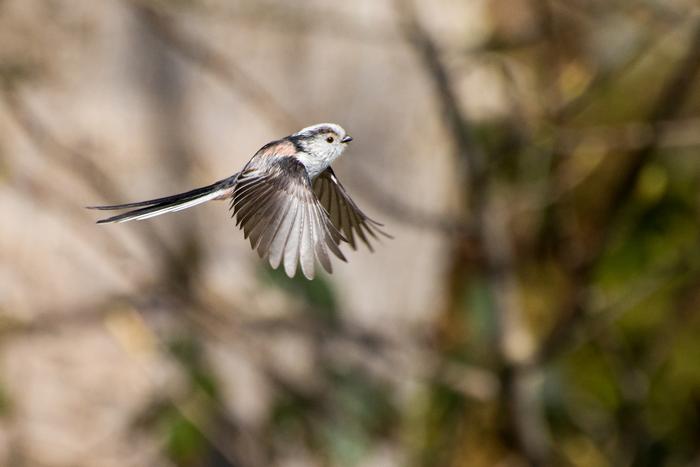Long-tailed tits, familiar denizens of British woodlands and gardens, are small passerines known for their acrobatic foraging and distinctive plumage. Yet, beyond their delicate appearance lies a complex social system wherein individuals form lasting family units that extend beyond the breeding season. Through meticulous, longitudinal observational studies combined with extensive field data, the research team has demonstrated that these birds do not migrate as disconnected individuals but as cohesive kin groups, maintaining robust social bonds throughout their journeys.
This discovery challenges the long-held assumption that migration represents a disruptive phase for social animals, particularly cooperative breeders. In contrast to many species where associations disintegrate during migratory movements, long-tailed tits exhibit persistent family bonds. The evolutionary implications of this behavior are profound, suggesting that kin-directed cooperation may be an adaptive strategy enhancing survival and reproductive success in fluctuating environments where group cohesion confers advantages in foraging efficiency, predator avoidance, and alloparental care.
The researchers synthesized thirty years of demographic, ecological, and behavioral data to elucidate the drivers shaping this kin-directed cooperation. They identified key factors influencing helper participation, including individual breeding success, familial relatedness, and environmental pressures such as predation risk and breeding season length. Notably, the propensity to help decreases with geographical dispersal from the birthplace, underscoring the critical influence of spatial proximity on cooperative interactions.
Dr. Jennifer Morinay, a postdoctoral research associate and co-lead author, emphasizes the novelty and significance of these findings. She explains, “Our data reveal that long-tailed tits travel with their social support network, a phenomenon previously undocumented in cooperative birds. This continuity in family structure during migration underscores the centrality of kinship in their social organization and cooperative breeding systems.” Such findings open avenues to explore the sensory and cognitive mechanisms facilitating kin recognition over distances, including vocal communication, olfactory cues, and learned social bonds.
The team also highlights the interaction between cooperation and competition, vital forces shaping social evolution. Professor Ben Hatchwell, co-lead author, reflects on these dynamics: “Our research illuminates how cooperation and competition coexist within the social framework of these birds, offering a parallel to social tensions recognizable in human societies. Understanding the ecological and evolutionary balance between these forces provides a window into the complexity of social systems across species.”
Implementing a rigorous observational approach, the study incorporates breeding records, banding data, and migration tracking to map familial relationships and cooperative behaviors over time. This methodology enabled the researchers to disentangle the demographic variables underpinning helper behavior and assess the ecological contexts favoring cooperation. The comprehensive scope of this dataset rivals few in the field, enhancing the robustness and generalizability of the conclusions drawn.
Furthermore, the study sheds light on the evolutionary underpinnings of alloparental care in birds, contributing to broader discussions on the evolution of cooperation. By documenting how unsuccessful breeders contribute to raising relatives’ offspring, the research exemplifies indirect fitness gains through kin selection—where helping behaviors enhance the reproductive success of closely related individuals, even at a personal reproductive cost.
Looking ahead, the researchers plan to delve deeper into the mechanisms enabling such intricate social cohesion. Future work aims to explore the sensory cues facilitating kin recognition, such as distinguishing calls or scent markers, as well as the neurological and genetic bases of cooperative behavior. Understanding how these birds maintain and reinforce bonds during periods of ecological stress and migration could illuminate principles applicable to other cooperative species.
This study provides a compelling illustration of how detailed, long-term ecological data can unravel complex social systems in non-human animals. It challenges simplistic notions of solitary migration and underscores the importance of sociality in shaping behavioral evolution. As human-induced environmental changes alter migratory patterns and habitats, understanding these social structures will be crucial for conservation and management strategies targeting cooperative species.
Subject of Research: Animals
Article Title: Ecological and demographic drivers of kin-directed cooperation in a social bird: Insights from a long-term study
Web References: http://dx.doi.org/10.1111/1365-2656.14237
Image Credits: Billy Clapham
Keywords: Cooperative breeding, Animal research, Discovery research, Wild birds, Behavioral ecology, Animal science, Bird migration, Foster parenting
Tags: avian family bondsavian social dynamicsBritish woodland birdscooperative breeding in birdsevolutionary implications of bird migrationintricate social systems in wildlifekinship among birdslong-tailed tits social behaviorlong-term ecological studiesmigration and social tiesmigratory behavior in passerinesUniversity of Sheffield research





